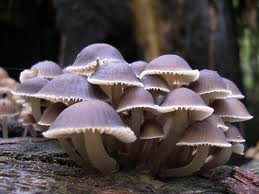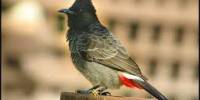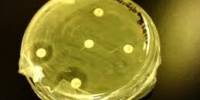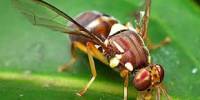ABSTRACT
Occurrence of fungi in seeds of ten selected medicinal plants viz. Andrographis, Angle’s trumpet, Asparagus, Butterfly pea, Changeable rose, Devil’s cotton, Indigo, Jatropha, Licorice and Margosa tree were detected. Inspection of dry seeds revealed that the seed samples contained apparently healthy seeds, discolored seeds and shriveled and malformed seeds. The germination percentage was recorded higher in Changeable rose (88.50%) and lower in Margosa tree (41.00%) in blotter method. Germination percentage was recorded higher in blotter method than pot soil test. Fungi were detected by blotter method both with and without pre-treatment of seeds. Hgcl2 (0.01%) solution was used for pre-treatment. Seven fungal species viz. Alternaria tenuis, Aspergillus flavus, Aspergillus niger, Curvularia lunata, Fusarium oxysporum, Penicillium sp and Rhizopus stolonifer were recorded from without pre-treated seeds while only three species of fungi viz. Alternaria tenuis, Curvularia lunata and Fusarium oxysporum, were recorded from pre-treated seeds. All these fungi are new records for seeds of medicinal plants in Bangladesh.
INTRODUCTION
Plant provides us not only food, cloth and shelter but also supply many other requirements such as medicines, flavoring agents etc. For long time plant was the only source of our medicines for treating different diseases. Even today, hilly tribes of Bangladesh are dependent primarily on plants for medicines. Plants possess medicinal properties as they store secondary metabolites such as alkaloids and terpenoids, which have the ability to correct our health disorders. In the course of advancement in the field of modern medicines, which are mostly synthetic organic compounds, plant based medicines have been ignored. But in many cases synthetic medicines have been proved to have side effect, which plant based medicines do not possess. Plant based medicines are therefore gaining popularity in both developed and developing countries. Many foreign countries such as Thailand, China, and India are exploring their medicinal plant resources for their own use and also for earning foreign currency.
Bangladesh with a rich medicinal flora in its bounds has a scope of exploiting medicinal plants. It is pertinent to mention here that only 50 years back people were dependent to a great extent on herbal medicines, Kabiraji Ayurvedy and Unani method of treatment which were very common among the village people. Brahmmi shak was a common item at lunch which was considered to be effective for improving nervous system. Recently photochemical analysis revealed that the extract of this plant has chemicals, which can improve nervous system and brain function. Unfortunately this plant has now become rare in Bangladesh.
Medicinal plants constitute an important natural wealth of our country. They play a significant role in providing primary health care services to rural people. They serve as important therapeutic agents as well as important raw materials for the manufacture of traditional and modern medicines. Substantial amounts of foreign exchange can be saved and earn commercial production of medicinal plants.
Recently, the Government of Bangladesh has launched campaign to plant medicinal plant as it is a safe, side effectless, low cost and very effective sources of disease prevention and cure. Millions of village people can cultivate medicinal plants in their homestead garden which will give them benefit of chief medication as well as green plantation of agro-social forestry.
Since the medicinal plants grow mostly in natural forest and fallow lands many of them have become threatened. On the various factors for extinction of medicinal plants diseases so to say seed-borne diseases might be play an important role. Seeds of Agricultural, Horticultural and forest crops are vulnerable to attack by many seed-borne pathogens (Fakir, 2003 and Richardson, 1990). For successful plantation of medicinal plants, availability of disease free seeds is the key factor. But limited works has been done on diseases of medicinal plants particularly seed-borne diseases. Richardson (1990) listed some medicinal plants which attacked by a number of seed-borne fungi, bacteria and viruses. He listed 30 fungi associated with seeds of different medicinal plants. No works has been done on seed-borne diseases especially fungi associated with the seeds of medicinal plants in the country.
In view of the above facts, the present study has been undertaken to detect fungi associated with the seeds of some selected medicinal plants grown in Bangladesh.
REVIEW OF LITERATURE
Ten medicinal plants viz. Abroma augusta Andrographis paniculata, Asparagus racemosus, Clitoria ternatea, Datura metel, Glycyrrhiza glabra, Hibiscus mutabilis, Indigofera tinctoria, Jatropha pandurifolia, Melia azadirachta which have high medicinal value were selected for studying the prevalence of seed-borne fungi. Limited works have been conducted on the detection of seed borne fungi of these medicinal plants. However, few workers worked on detection of seed borne fungi of Calendula, Coriander, Cumin seed, fenugreek, etc which known to have some medicinal value. Some related literature have been cited in this section chronologically:
Kirkpatrick and Bazzaz (1979) found certain seed-borne fungi on Angl’s Trumpet seeds and their influence on the colonizing herb Datura stramonium.
Gilberston and Manning (1980) isolated F. moniliforme, F. oxysporum, F. solani and F. tricinctum from both surface sterilized and unsterilized seeds of Asparagus. They also stated that Fusarium moniliforme and Fusarium oxysporum were pathogenic.
Richardson (1990) revealed that the seeds of Datura metel var. muricata was infected by Alternaria crassa and seedling with chlorotic cotyledons that reduces seed quality and causes pre-and post-emergence blight. He listed different fungi, bacteria and viruses associated with the seeds of some medicinal plants. They are as follows:
Sl. No. | Common name | Scientific name | Seed-borne pathogen |
| 1 | African marigold (Calendula) | Calendula officinalis |
|
| 2 | Indian hemp (bhang) | Cannabis sativa |
|
| 3 | Goose foot (Bethu saag) | Chenopodium album |
|
| 4 | Cumin seed (Jeera) | Cuminum cyminum |
|
| 5 | Bermuda grass (durva) | Cynadon dactylon |
|
| 6 | Cardamom (Elachi) | Elettaria cardamomum | 1. Cardamom mosaic virus
|
Sl. No. | Common name | Scientific name | Seed-borne pathogen |
| 7 | Black cumin (Kaligira) | Nigella sativa |
3. Fusarium sp
|
| 8 | Sweet/Common basil (Babuitulsi) | Ocimum basilacum |
|
| 9 | Poppy (Aphim) | Papaver somniferum |
|
| 10 | Ispaghul/ Spogel seed (Isabgul) | Plantago ovata |
|
| 11 | Red sandal wood (Raktqachanchan) | Pterocarpus santatinus |
|
| 12 | Castor oil plant | Ricinus communis |
|
Sl. No. | Common name | Scientific name | Seed-borne pathogen |
| 13 | Fenugreek | Trigonella foenumgraecum |
5. Corynespora cassiicola |
MATERIALS AND METHODS
3.1 Experimental site
The experiment was conducted in the Seed Health Laboratory, Department of Plant Pathology, Sher-e-BanglaAgriculturalUniversity, Dhaka.
3.2 Experimental period
The experiment was conducted during the period from January, 2006 to June, 2006.
3.3 Medicinal plant species included
The species of medicinal plants included for the present investigation were as follows:
Sl. No. | Local Name | English Name | Scientific Name |
1 | Kalomegh | Andrographis | Andrographis paniculata |
2 | Dutura | Angle’s Trumpet | Datura metel |
3 | Shatamuli | Asparagus | Asparagus racemosus |
4 | Apragita | Butterfly pea | Clitoria ternatea |
5 | Sthalpadma | Changeable rose | Hibiscus mutabilis |
6 | Ulatkamble | Devil’s cotton | Abroma augusta |
7 | Nill | Indigo | Indigofera tinctoria |
8 | Joytun | Jatropha | Jatropha pandurifolia |
9 | Jasthimudhu | Licorice | Glycyrrhiza glabra |
10 | Neem | Margosa tree | Melia azadirachta |

Plate . Seeds of different medicinal plants: A) Asparagus seeds, B)
Jatropha seeds, C) Margosa Tree seeds, D) Butterfly seeds,
E) Devil’s cotton seeds and F) Licorice seeds
3.4 Collection of seed samples
The seeds of the ten selected medicinal plants were collected from the Agroforestry garden, Sher-e-BanglaAgriculturalUniversity, Dhaka-1207 (Plate 1 and 2). For each medicinal plant four hundred seeds were collected randomly. All the seeds were collected immediately after harvest of the crop planted in the Agroforestry garden, SAU, Dhaka. After collection, the seeds were kept in separate paper bags and stored in the refrigerator at 4±20C in the Seed Health Laboratory.
3.5 Inspection of dry seeds
Inspection of dry seeds was done according to the International Rules of ISTA (1999). In this method, randomly 400 seeds were taken from each material and visually inspected and graded into three categories; i) Apparently healthy seeds; ii) Discolored seeds and iii) Shrivelled and malformed seeds. The seeds under each category were counted and calculated the percentages of each group. After recording the data of dry inspection, all the materials were kept to use in blotter test.
3.6. Detection of fungi
3.6.1 Blotter method
Blotter method test was done in petridishes following the International Rules of ISTA (1976). Two hundred seeds were taken randomly from each sample and were placed in petridishes (25 0r 10 seeds per petridish according to the size of the seeds). Both without pre-treated and pre-treated seeds were used in this method. HgCl2 solution (0.01%) was used as sterilizing agent in which seeds were dipped about one minute and then washed with sterile water and kept 5 minutes to dry up. Then both pre-treated and without pre-treated seeds were placed in petridishes. Before plating seeds, three pieces of Whateman no. 1 filter paper dipped in sterile water and then placed on each dish. The petridishes with seeds were then incubated in the incubator at 22 ± 20 C under an alternate cycle of 12 hours light and darkness in the Seed Health Laboratory, Department of Plant Pathology for 7 days. During incubation water was supplied as required. Seeds were examined after 7 days of incubation to detect the fungi. The fungi were identified by observing their growth characters on the incubated seeds in blotter method under stereomicroscope at 25 X magnification following the keys of Nath et al. (1970), Chidambaram et al. (1973), Ellis (1971), Benoit and Mathur (1970), Mathur and Cunfer (1993) and Mathur and Kongsdal (2003).
3.7 Germination test
Germination was recorded on blotter method prior to detection of seed-borne fungi. Germination percentage was also determined by pot soil test. Pot soil test has been done in the following procedures
3.7.1 Pot preparation
For this experiment soil was sterilized by 0.01% Formaldehyde for five days. After completion of the sterilization, the pots were filled with soil and placed in the net house of Sher-e-BanglaAgriculturalUniversity, Dhaka.
3.7.2 Sowing of seeds in pots
The seeds of 10 selected medicinal plants were sown in pots prepared by filling with sterilized soil. 25 seeds of each plant species were sown in each pot and for each species three replications were maintained. After 28 days of seed sowing, the germination percentage of ten selected medicinal plants was recorded.
Dry Inspection
The results of dry inspection of seeds of ten medicinal plants are presented in Table 1 and Plate 3-8. It was observed that three categories of seeds viz. i) Apparently healthy seeds, ii) Discolored seeds, and ii) Shrivelled and malformed seeds ranged from 91.00%- 97.50%, 1.50%-5.00% and 2.50%-4.50%, respectively. The percentage of apparently healthy seeds were recorded in Andrographis (97.00%), Angle’s trumpet (96.5%), Asparagus (96.50%), Butterfly pea (92.50%), Changeable Rose (97.50%), Devil’s cotton (96.50%), Indigo (91.00%), Jatropha (95.50%), Licorice (97.00%) and Margosa tree (93.00%). All the seed samples of different plant species were found to have above 90% apparently healthy seeds.
Table 1. Dry inspection of the seed samples of ten selected medicinal plants
Sl. No. | Medicinal plant | Percent seed showing | ||
Apparently healthy | Discolored | Shrivelled and malformed | ||
1 | Andrographis | 97.00 | 3.00 | 0.00 |
2 | Angle’s Trumpet | 96.50 | 3.50 | 0.00 |
3 | Asparagus | 96.50 | 0.00 | 3.50 |
4 | Butterfly pea | 92.50 | 3.00 | 4.50 |
5 | Changeable rose | 97.50 | 0.00 | 2.50 |
6 | Devil’s cotton | 96.50 | 0.00 | 3.50 |
7 | Indigo | 91.00 | 5.00 | 4.00 |
8 | Jatropha | 95.50 | 1.50 | 3.00 |
9 | Licorice | 97.00 | 0.00 | 3.00 |
10 | Margosa tree | 93.00 | 3.50 | 3.50 |
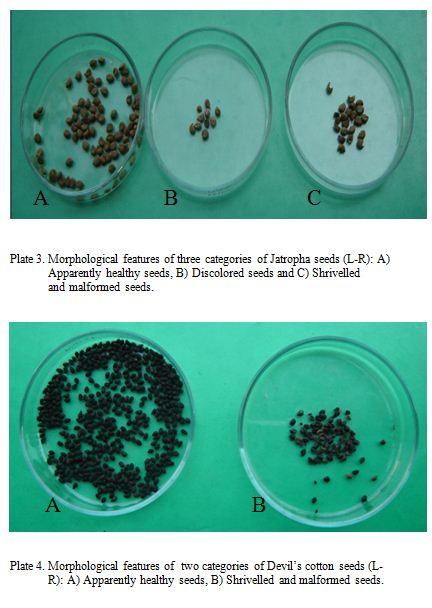
The percentage of discolored seeds was found in seeds of six species viz. Angle’s trumpet (3.50%), Butterfly pea (3.00%), Indigo (5.00%), Jatropha (1.50%), Andrographis (3.00%) and Margosa tree (3.50%), The percentage of shrivelled and malformed seeds was found in seeds of eight species viz. Asparagus (3.50%), Butterfly pea (4.50%), Changeable Rose (2.50%), Devil’s cotton (3.50%), Indigo (4.00%), Jatropha (3.00%), Licorice (3.00%) and Margosa tree (3.50%).
DISCUSSION
The present research work was undertaken to study the seed borne fungi on ten selected medicinal plants. In inspection of dry seeds it was observed that there were three categories of seeds viz. i) Apparently healthy seeds, ii) Discolored seeds and iii) Shrivelled and malformed seeds. The highest percentage of apparently healthy seeds was observed in Changeable rose (97.50%) and the lowest percentage was in Indigo (91.00%). The highest percentage of discolored seeds was observed in Indigo (5%) and the lowest percentage was in Jatropha (1.5%). The highest percentage of shriveled and malformed seeds was observed in Butterfly (4.50%) and the lowest percentage was in Changeable rose (2.50%). Out of ten seeds studied, four seeds viz. Devil’s cotton, Asparagus, Jsthimadu and Changeable rose were free from discolored seeds and two seeds namely, Algle’s trumpet and Andrographis were free from shrivelled and malformed seeds. Discolored and shriveled seeds as observed in medicinal plants have been also encountered in seeds of various agricultural crops reported by Harun-or-Rashid (2003), Khair (2001), Yum et al. (1988), Agarwal et al. (1990) and Ploper an Raut (1994). In general, more than 90% seeds of the medicinal plants studied were apparently healthy seeds and this data indicates that in comparison to other crops the seed health condition of medicinal plants are relatively better.
Regarding the germination of seeds blotter method and pot soil test were used. In blotter method, the highest percentage of seed germination was recorded in Changeable rose (88.50%) and the lowest in Margosa tree (41.00%). In pot soil test, the highest percentage of germination was observed in Asparagus (75.00%) and the lowest percentage was found in Margosa tree (30.50%). From dry inspection test and germination test it may be concluded that comparatively higher number of healthy seeds resulted higher number of germination in blotter method. This finding was consistent with Garcia et al. (1980) and Skripka et al. (1989).
For detecting seed borne fungi of the ten selected medicinal plants blotter method was used. Both pre-treated (0.01% HgCl2) and untreatedseeds were tested for detecting fungi in this method. Seven fungi, representing six genera viz. Aspergillus flavus, Aspergillus niger, Alternaria tenuis, Curvularia lunata, Fusarium oxysporum, , Penicillium sp and Rhizopus stolonifer were recorded in seeds of ten medicinal plants. All these seven species of fungi were recorded from untreated seeds, while only three species viz. Alternaria tenuis, Curvularia lunata and Fusarium oxysporum were recorded in pre-treated seeds. Occurrence of lower number of fungi in pre-treated seeds was due to the effect of 0.01% Hgcl2. Such reduction of seed-borne fungal inocula was observed by Mathur et al. (1967) and Nath et al. (1970a). Mathur et al. (1967) found that F. oxysporum and F. moniliforme were less in pre-treated sorghum seeds. Similarly, Nath et al. (1970a) worked for the detection of seed borne fungi of mungbean (Vigna radita) and showed that pre-treated seeds with 0.01% Hgcl2 reduced the counts of Colletotrichum truncatum, Curvularia lunata, Fusarium spp and Macrophomina phaseolina. On the other hand, Fusarium oxysporum along with other species viz. Fusarium moniliforme, Fusarium solani and Fusarium tricinctum were isolated from both pre-treated and untreated seeds of Asparagus by Gilberston and Manning (1980).
In the present study seven fungi were detected in seeds of ten medicinal plants. None of the fungi have been found associated with the seeds of these ten plant species. Thus, the seven fungi appear to be new records of seed-borne fungi of medicinal plants in Bangladesh.
SUMMARY AND CONCLUSION
Seeds of ten medicinal plants were collected from Agroforestry field laboratory SAU, Dhaka and the seeds were tested for detection of seed-borne fungi during the month of January, 2006 to June, 2006.
Seed samples were categorized by inspection as apparently health seeds, discolored seeds and shriveled and malformed seeds. The highest percentage of healthy seeds were found in Changeable Rose (97.50%) seeds, discolored seeds in Indigo (5.00%) and shrivelled and malformed seeds in Butterfly Pea (4.50%). All seeds of ten selected medicinal plants are found to have above 90% apparently healthy seeds.
Germination was determined by blotter method and pot soil test. The highest percentage of germination was found in Changeable Rose (80.00%) and lowest in Margosa tree (41.00%) in blotter method and in pot soil test the highest percentage of germination was recorded in Asparagus (71.00%) and lowest in Margosa tree (30.50%).
For detection of seed-borne fungi blotter method was used. Both untreated and pre-treated (Treated with 0.01% Hgcl2) seeds were used. Seven fungal species viz. Aspergillus flavus, Aspergillus niger, Alternaria tenuis, Curvularia lunata, Fusarium oxysporum, Penicillium sp and Rhozopus stolonifer were recorded from of the ten selected medicinal plants while only three fungal species viz. Alternaria tenuis, Curvularia lunata and Fusarium oxysporum were recorded from pre-treated seeds.
It may be concluded that seeds of medicinal plants attacked by different fungi where Aspergillus spp, Rhizopus stolonifer and Penicillium sp are saprophytic fungi. Alternaria tenuis, Fusarium oxysporum and Curvularia lunata are saphrophytic, but may be pathogenic. These are the new records for Bangladesh. Considering the limitation of this research works, it may be mentioned that present studies need to be repeated including more testing methods and seeds from more representing localities to find out pathogenic nature of fungi on medicinal plants before stating acceptable recommendation.
